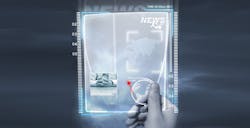A new guide, developed by the American Society for Microbiology (ASM) and the Infectious Diseases Society of America (IDSA), will help physicians appropriately and accurately use laboratory tests for the diagnosis of infectious diseases. Published in the journal Clinical Infectious Diseases, the recommendations provide guidance regarding which lab tests are valuable and should be used in specific contexts; which add little or no value; and how to appropriately collect and manage specimens.
Divided into sections on anatomic systems (including infections of the bloodstream, cardiovascular system, central nervous system, eyes, soft tissue of the head and neck, upper and lower respiratory system, gastrointestinal tract, abdomen, bone and joints, urinary tract, genitals, and skin and soft tissues) and etiologic agent groups (tick-borne infections, viral syndromes, blood and tissue and parasite infections), the guide helps physicians decide what tests to request when they suspect specific agents are causing disease. It also provides targeted recommendations and precautions regarding selecting and collecting specimens, and detailing what is required for various cultures and tests, as well as the appropriate collection device and temperature and ideal transport time.
The guide suggests 10 tenets of specimen management that everyone involved—from physician to nurse to laboratory scientist—should follow for good patient care. Read the article in Clinical Infectious Diseases.





